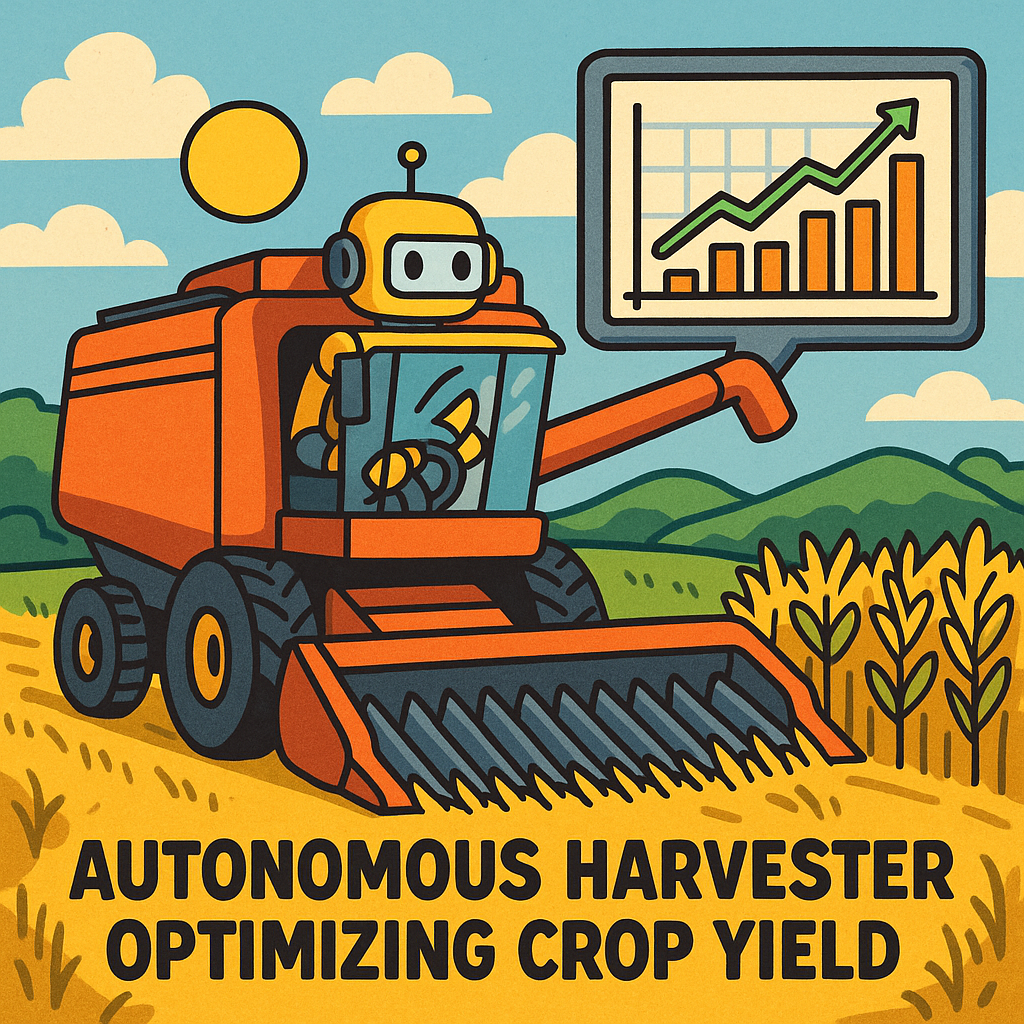Understanding Real-Time Operating Systems (RTOS) in Autonomous Harvesters
As the agriculture sector increasingly turns to automation, the role of real-time operating systems (RTOS) in autonomous harvester electronic control units (ECUs) becomes paramount. These systems are not just a backbone for machine operations; they play a crucial role in enhancing crop yield prediction accuracy. However, optimizing an RTOS for these applications presents a unique set of challenges. Let’s explore the intricacies of RTOS optimization in this context.
The Challenge of Real-Time Data Processing
When it comes to autonomous harvesters, the ability to process data in real-time is essential. These machines must gather information from various sensors—like moisture sensors, GPS, and yield monitors—while simultaneously controlling their operational systems. The challenge lies not only in the sheer volume of data but also in the need for timely responses to dynamic environmental conditions. For example, a harvester must adapt its speed or adjust its cutting height based on real-time feedback about crop conditions.
Hardware Considerations for RTOS Optimization
Choosing the right hardware is critical for optimizing RTOS performance. A balance must be struck between processing power, power consumption, and cost. Generally, a microcontroller with multiple cores is preferred, as it allows for parallel processing of tasks. This setup can significantly enhance the responsiveness of the system. For instance, a dual-core processor can handle sensor data acquisition on one core while executing control algorithms on another, minimizing latency.
Moreover, memory management becomes a key factor. Autonomous harvesters often operate in remote areas where connectivity is limited. Therefore, local data storage solutions should be incorporated to buffer data for later transmission. Selecting an RTOS that supports efficient memory allocation and management, such as FreeRTOS or Zephyr, can drastically improve performance and reliability.
Firmware Design: Balance Between Performance and Reliability
Once the hardware is set, the next step is firmware development. This is where the choice of algorithms directly impacts crop yield prediction accuracy. A common approach is to implement Kalman filters for real-time sensor data fusion, which can enhance the precision of yield predictions by filtering out noise from environmental variables.
However, the design trade-offs must be carefully considered. For instance, while more complex algorithms may yield better predictions, they also consume more processing resources and may introduce delays. Engineers must evaluate the computational demands of these algorithms against the available processing power. This often requires iterative testing and optimization cycles to find the sweet spot where predictions are accurate without compromising real-time performance.
Data Integration and Communication Protocols
In an interconnected farming ecosystem, seamless communication between various ECUs is vital. Implementing effective communication protocols, such as CAN (Controller Area Network) or MQTT (Message Queuing Telemetry Transport), allows for efficient data sharing between the harvester and its environment. This can lead to better decision-making based on collective data from multiple sources.
However, optimizing these communication protocols under an RTOS can be tricky. It’s essential to ensure that message priority is correctly managed, especially in critical situations where immediate action is required, such as obstacle detection. This prioritization is vital in preventing system lag, which could lead to operational failures.
Real-World Trade-offs and Solutions
Real-world implementation often reveals trade-offs that were not apparent during the design phase. For instance, while more frequent sensor data sampling can enhance prediction accuracy, it may lead to increased power consumption, impacting the harvester’s operational duration. Engineers must weigh the benefits of frequency against battery life, often leading to adaptive sampling strategies that adjust based on current conditions.
Additionally, the physical environment poses challenges. Harsh weather conditions can affect sensor performance and data accuracy. Employing robust sensor technology and redundancy in critical areas can mitigate some of these issues. Furthermore, software solutions like anomaly detection algorithms can help identify when sensor data may be unreliable due to environmental factors, allowing the system to compensate in real-time.
Conclusion: The Path Forward in RTOS Optimization
As autonomous harvesters continue to evolve, optimizing real-time operating systems will be key to enhancing crop yield predictions. By focusing on hardware capabilities, firmware efficiency, and communication strategies, engineers can create more resilient and accurate systems. The path forward involves ongoing innovation and adaptation, ensuring that these machines can meet the demands of modern agriculture while contributing to sustainable practices.



